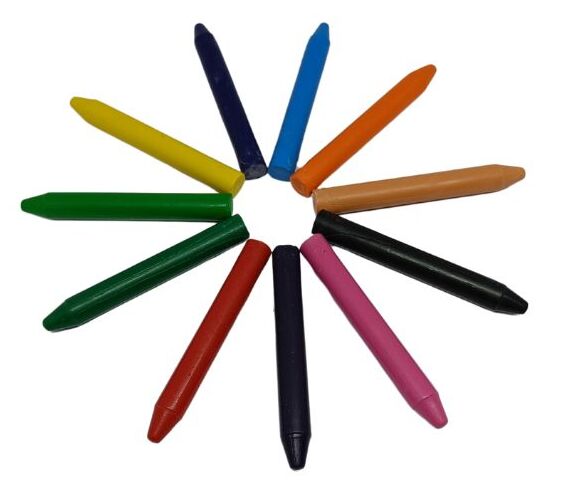What is Wax Crayon? Wax crayon is a type of colored wax used as an art medium. It is used by kids, artists and educators to draw and color on paper, cardboard or even fabric. Most wax crayons have a smooth texture and bright colors. The wax used in wax crayons is usually a mixture of pigment and paraffin (or beeswax) wax.

10 shade wax

12 shade wax

16 shade wax

24 shade wax
Plastic crayons are constituted of PP or PE granules blended into waxy substance. These crayons are frequently promoted as being longer-lasting and more resilient than wax crayons. They are preferred because of their durability, capacity to create vivid colors, and adaptability to a range of media, including paper, cardboard, plastic, and even glass.
When it comes to coloring, plastic crayons are particularly well-liked by young children, artists, and educators since they provide a more consistent and smoother experience than wax crayons. They can be used outdoors or in warmer climates because they have the added benefit of not melting as easily in hot weather.
There are several types of plastic crayons available on the market, each with its own unique features and benefits. Here are some common types:
These are just a few examples of the types of plastic crayons available. Depending on your preferences and needs, you can choose from a wide variety of options to enhance your coloring experience.
Organic crayons are composed of natural and non-toxic components, typically sourced from plant-based or organic substances. These crayons are specifically formulated to provide a safer option for children and are more environmentally conscious when compared to conventional crayons that may include petroleum-derived waxes and artificial pigments.
Opting for organic crayons enables customers to endorse sustainable and ethical methods, all the while safeguarding their children and the environment. These crayons provide a eco-friendly substitute to traditional art materials without sacrificing quality or functionality.
There is a wide variety of organic crayons available in the market, each offering its own distinct characteristics and advantages. Here are some commonly found types:
These are merely a few illustrations of the kinds of organic crayons accessible. Depending on your preferences and requirements, you have a wide range of options to select from that align with your artistic style and environmental values.
Crayons labeled as natural are crafted from ingredients sourced from nature, such as beeswax, soy wax, or mineral pigments. While these crayons may contain natural substances, they may not be certified organic. Natural crayons prioritize the use of renewable and biodegradable materials while avoiding synthetic additives.
On the other hand, organic crayons are made from ingredients that are certified organic, meaning they are cultivated and processed without synthetic pesticides, fertilizers, or other chemicals. These crayons adhere to strict organic standards established by certification bodies like the USDA Organic. Ingredients in organic crayons are typically sourced from organic farms and producers, ensuring a higher level of purity and environmental sustainability.
In conclusion, although both natural and organic crayons are derived from natural sources, organic crayons specifically meet organic certification standards, ensuring that the ingredients used are free from synthetic chemicals. Natural crayons, on the other hand, may still use natural ingredients but might not be certified organic. The decision between natural and organic crayons ultimately depends on individual preferences regarding environmental sustainability and ingredient purity.